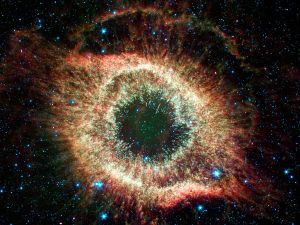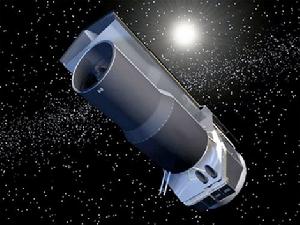Introduction
The Spitzer Space Telescope was the first earth to an orbiting telescope, at a cost of $8 billion, formerly the Space Infrared Telescope Facility (SIRTF), December 2003, through a public contest, in which the satellite space telescope to the concept of author, American astronomer Lyman Spitzer, Jr. (William Lyman Spitzer, Lyman Spitzer, Jr. named it plans in space five years service plans in space five years service .
1 "Spitzer telescope using liquid helium as coolant, to which the observation instrument by operating at very low temperature,which can detect the dust or the like, the shadowed cold and distant by faint infrared radiation, or heat 1 "Spitzer telescope using liquid helium as coolant, to which the observation instrument by operating at very low temperature,which can detect the dust or the like, the shadowed cold and distant by faint infrared radiation, or heat .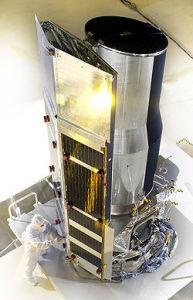
Work Principle
Spitzer Space Telescope's work in the wavelength range of 3 - 180 micron wavelength band of infrared rays, which replaced the former of the Infrared Astronomical Satellite (IRAS) Spitzer Space Telescope's work in the wavelength range of 3 - 180 micron wavelength band of infrared rays, which replaced the former of the Infrared Astronomical Satellite (IRAS) . Spitzer space telescope although not much larger than its diameter, yet with the rapid development of infrared detection device, the performance is improved remarkably Spitzer space telescope although not much larger than its diameter, yet with the rapid development of infrared detection device, the performance is improved remarkably .
Spitzer's infrared detection sensitivity is very high, at a wavelength of from 3 micrometers to 180 micrometers between all of the infrared radiation is able to collect all the "eye" Spitzer's infrared detection sensitivity is very high, at a wavelength of from 3 micrometers to 180 micrometers between all of the infrared radiation is able to collect all the "eye" . bottom while this band due to its range of radiation to reach the ground and that is guaranteed to be blocked by the Earth's atmosphere, ground - based telescopes to spot " bottom while this band due to its range of radiation to reach the ground and that is guaranteed to be blocked by the Earth's atmosphere, ground - based telescopes to spot ".
therefore Spitzer can detect in the universe makes it difficult to perceive objects, such as some of the small dim stars therefore Spitzer can detect in the universe makes it difficult to perceive objects, such as some of the small dim stars . with Optical astronomical observation, in contrast to Spitzer's infrared "eye" is able to penetrate dust and gas, saw its infinite mystery behind with Optical astronomical observation, in contrast to Spitzer's infrared "eye" is able to penetrate dust and gas, saw its infinite mystery behind .
on 25 August 2003, the Spitzer space telescope in Winter Park, Florida, the Cape Canaveral Air Force Station by a Delta II rocket was launched, operating in one of the earth's rear, orbit around the Sun, with an annual 0.1 astronomical unit of speed is gradually away from the Earth, which makes the event of a fault, will not be able to use the shuttle to repair it 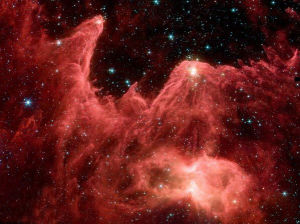
Specification Of Equipment
The Spitzer Space Telescope has a length of about 4 meters, based on the weight of 950 kg, The primary mirror is 85 cm, with beryllium to make The Spitzer Space Telescope has a length of about 4 meters, based on the weight of 950 kg, The primary mirror is 85 cm, with beryllium to make . lesson. There are three observation instruments, respectively: 1, the infrared array camera (IRAC), having a size of 256 x 256 pixels, working at 3.6, 4.5, 5.8 and 8 - micron - band
2, Infrared Spectrograph (IRS), which consists of 4 models, respectively work in 5. 3 - 14 micron (low resolution), 10 - 19. 5 microns ((high resolution), 14 - 40 microns (low resolution) and 19 - 37 microns (high resolution) 3,multiband imaging photometer, to work in the infrared band by the three detector arrays, respectively, and 128 * 128 pixel (24 micrometers), 32 (70 microns) and a 2 * 2 pixels (20 microns) 3,multiband imaging photometer, to work in the infrared band by the three detector arrays, respectively, and 128 * 128 pixel (24 micrometers), 32 (70 microns) and a 2 * 2 pixels (20 microns) .
160 in order to avoid the telescope itself, the infrared rays emitted from the interference, the primary mirror cooled to a temperature 5. 5K telescope itself is also provided with a protective cover, in order to avoid the sun and the earth emitted infrared interference telescope itself is also provided with a protective cover, in order to avoid the sun and the earth emitted infrared interference .
in the disc, is a great deal of dust and gas that blocks visible light,Thus the earth directly with optical telescopes on the galaxy near the center of the region of the in the disc, is a great deal of dust and gas that blocks visible light,Thus the earth directly with optical telescopes on the galaxy near the center of the region of the . infrared wavelength longer than that of visible light, can penetrate dense dust, so the infrared observation can help people understand the core of the Milky Way, star formation and extrasolar planets infrared wavelength longer than that of visible light, can penetrate dense dust, so the infrared observation can help people understand the core of the Milky Way, star formation and extrasolar planets .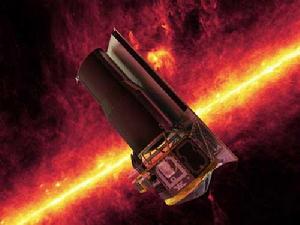
Scientific Objectives
The first, looking for extrasolar planet, The first, looking for extrasolar planet, . this is many years since the persistence of this is many years since the persistence of .
in the visible wavelength band is difficult to find them, because the planet's light will flood in the visible wavelength band is difficult to find them, because the planet's light will flood . the starlight in infrared, stars and planets and spectral characteristics are distinctly different from, in the infrared band may be relatively easy to find extrasolar planets around other stars the starlight in infrared, stars and planets and spectral characteristics are distinctly different from, in the infrared band may be relatively easy to find extrasolar planets around other stars .
second, to explore how the planets formed second, to explore how the planets formed . according to popular theory, the planets are around stars in the form of according to popular theory, the planets are around stars in the form of .
of different evolution stage of debris,to be drawn as to the processes of planet formation of different evolution stage of debris,to be drawn as to the processes of planet formation . work both in the visible light is also very difficult to achieve because of obscuration by the dust brought us there to see what has happened work both in the visible light is also very difficult to achieve because of obscuration by the dust brought us there to see what has happened .
infrared observation can be blocked by the penetration of dust, revealing the mystery third man infrared observation can be blocked by the penetration of dust, revealing the mystery third man ., , .
strange galaxies in the Spitzer before liftoff, a European Code of Conduct for the Infrared Astronomical Satellite (IRAS) "found some very strong radiation in the infrared and visible radiation is very weak to the galaxies, most of these galaxies are merging or interacting galaxies strange galaxies in the Spitzer before liftoff, a European Code of Conduct for the Infrared Astronomical Satellite (IRAS) "found some very strong radiation in the infrared and visible radiation is very weak to the galaxies, most of these galaxies are merging or interacting galaxies . some galaxy has a nucleus of the galaxy in which enormous energy is released,Active galaxies called some galaxy has a nucleus of the galaxy in which enormous energy is released,Active galaxies called .
human having strong infrared radiation of the galaxy and active galaxy known is less, "Spitzer" of the third scientific goal is develop on these strange galaxy of observation and research, in order to find out more about human having strong infrared radiation of the galaxy and active galaxy known is less, "Spitzer" of the third scientific goal is develop on these strange galaxy of observation and research, in order to find out more about . fourth, distant galaxies to reveal the early cosmos fourth, distant galaxies to reveal the early cosmos .
Hubble Space Telescope has captured 130 light - years away in the universe, where menare many galaxies far Hubble Space Telescope has captured 130 light - years away in the universe, where menare many galaxies far . 130 billion light - years away in the light of the needs of the time 13 billion years to reach us, so we should see is a picture of the universe 130 billion years ago 130 billion light - years away in the light of the needs of the time 13 billion years to reach us, so we should see is a picture of the universe 130 billion years ago .
"Hubble"observation in the visible and ultraviolet bands, "Spitzer" observations in the infrared band, a combination of both will get more out of observation results of "Hubble"observation in the visible and ultraviolet bands, "Spitzer" observations in the infrared band, a combination of both will get more out of observation results of . 2 2.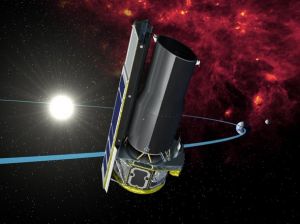
Observation Results
Found Two Planets Collide
In August 2009, the NASA space network, astronomers using the Spitzer telescope found two orbiting around the young planet, they had for thousands of years In August 2009, the NASA space network, astronomers using the Spitzer telescope found two orbiting around the young planet, they had for thousands of years . collision collision.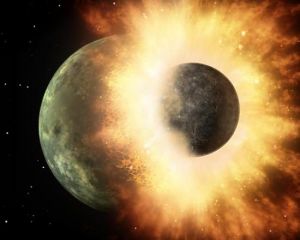
Found Most Primitive Black Hole
In March 2010, Xiaohui Fan (Fan) Xiaohui.Shes led a study using the Spitzer Space Telescope discovered a minimum of two quasars, respectively is J0005 - 0006 and J0303 - 0019 QSO quasar, 130 light - years from Earth in the NASA's Chandra X - ray Observatory also were observed in one of the X - ray radiated by quasars NASA's Chandra X - ray Observatory also were observed in one of the X - ray radiated by quasars .
around quasars in the ambient gas from being swallowed, quasars emits X - rays, around quasars in the ambient gas from being swallowed, quasars emits X - rays,. ultraviolet and visible light from the quasar in the black hole mass and the amount of dust being jointly increase ultraviolet and visible light from the quasar in the black hole mass and the amount of dust being jointly increase .
researchers found J0005 - 0006 and J0303 - 0019 QSO quasar supermassive black hole in the center of the minimum quality, it was shown that the two quasars is still very young, in this period, they also produce no dust around researchers found J0005 - 0006 and J0303 - 0019 QSO quasar supermassive black hole in the center of the minimum quality, it was shown that the two quasars is still very young, in this period, they also produce no dust around .
Measured By Far The Most Accurate Speed Of Cosmic Expansion
Beijing time on October 8, 2012, the Daily Mail reported, astronomers recently presented the cosmic expansion rate and by far the most accurate measurement value Beijing time on October 8, 2012, the Daily Mail reported, astronomers recently presented the cosmic expansion rate and by far the most accurate measurement value . formed a group of scientists using NASA's Spitzer Space Telescope, the latest measurement shows that the expansion of the universe's speed was about 46 miles (74 kilometers) per second per megaparsec (a more accurate value is 74. 3 + / - 1 km / s / Mpc)
4 4.
Shoot Pictures
NASA named the Spitzer infrared space telescope Top Figure in May 2012, to celebrate the Spitzer Space Telescope's service to 1000 days, NASA, the captured infrared images taken over by using the observation data of the image, along with workshops on's list of the Top Ten infrared space figure, included in the Milky Way Galaxy, Cygnus, spiral nebulae, including the Sombrero galaxy and the universe as a major tornado in succession, made the list NASA named the Spitzer infrared space telescope Top Figure in May 2012, to celebrate the Spitzer Space Telescope's service to 1000 days, NASA, the captured infrared images taken over by using the observation data of the image, along with workshops on's list of the Top Ten infrared space figure, included in the Milky Way Galaxy, Cygnus, spiral nebulae, including the Sombrero galaxy and the universe as a major tornado in succession, made the list . 5 5.